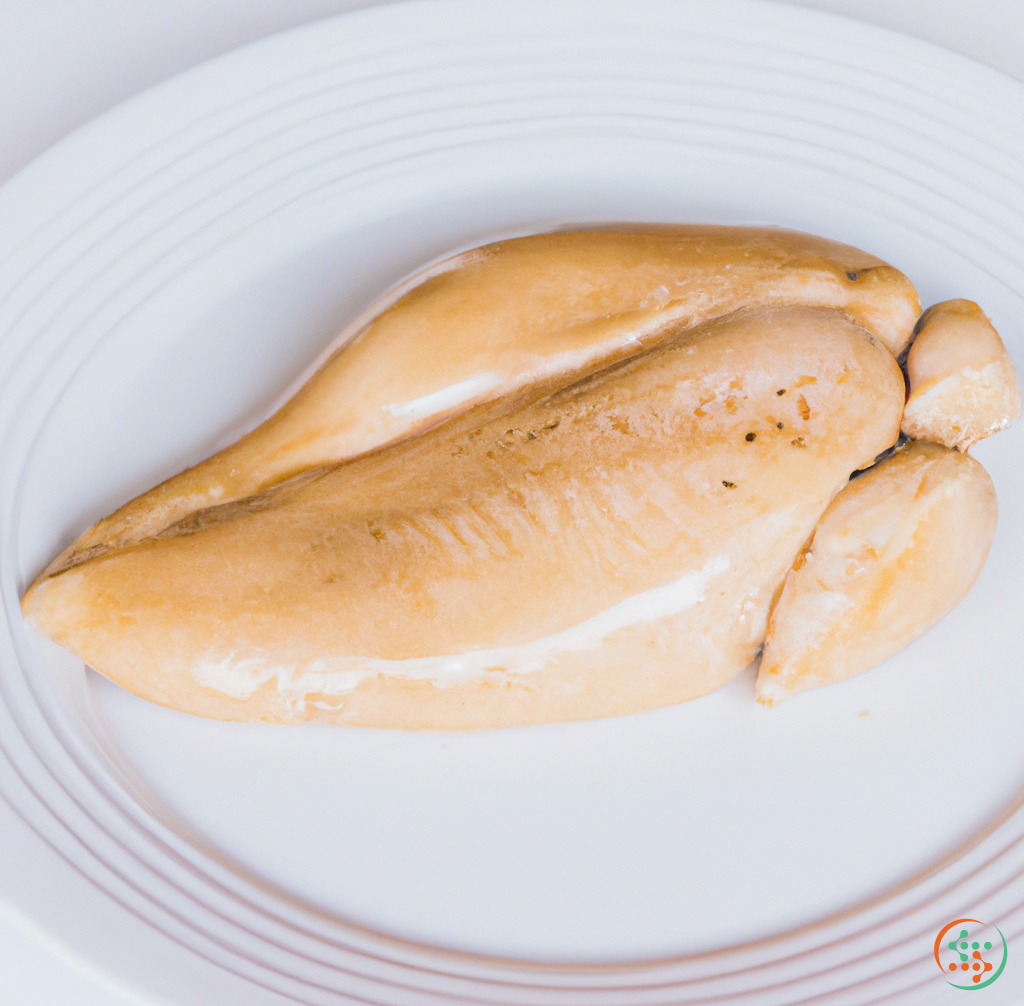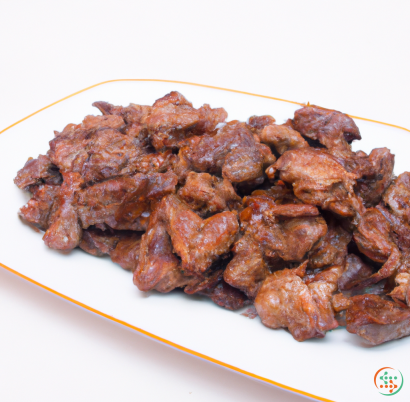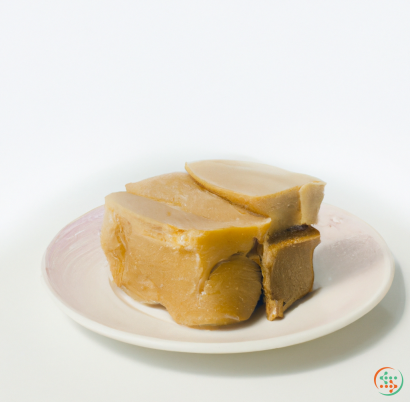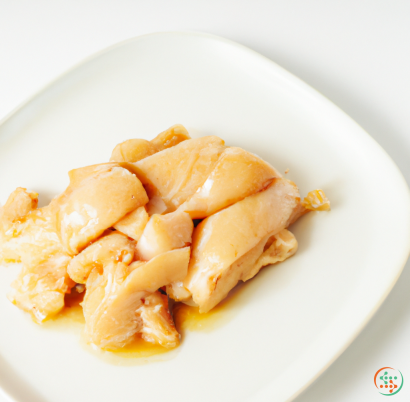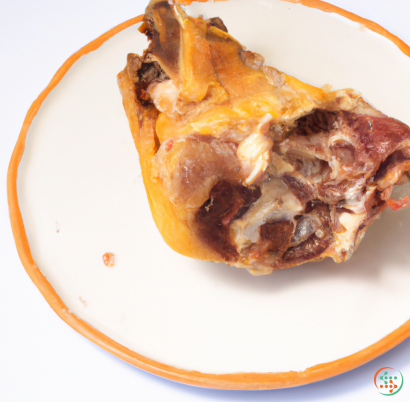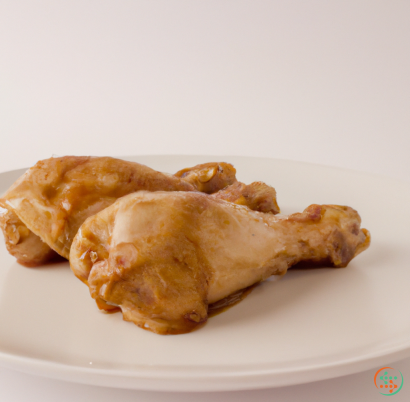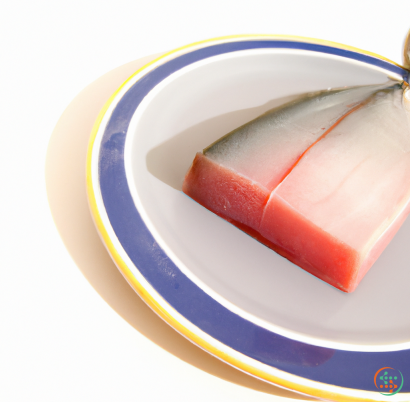Chicken Breast
When most people think of chicken, they conjure up the image of a juicy chicken breast, covered in golden-brown breading. The chicken breast is undeniably one of the most popular cuts of chicken, enjoyed by families across the globe. Whether grilled, baked, or fried, this sweet, tender cut brings a unique flavor and texture to a meal.
For those unfamiliar with the chicken breast, it can be confusing trying to figure out exactly what a it is, and why it is so popular. To put it simply, the chicken breast is a cut of meat that comes from the pectoral muscle of the chicken. It's located on the breast near the neck and rib cage, which is why it can often appear as two parts. The breast is usually sold as a single piece, weighing about 8 oz per pound.
For cooking, the chicken breast is a versatile cut of meat that can be prepared in many different ways. Because of its relatively mild flavor, it can easily absorb the flavors of a marinade or rub. It can be barbequed, pan-fried, baked, grilled, or even steamed. Thanks to its succulent texture, the chicken breast is great for everything from sandwiches to salads and stir-fries.
Nutritionally-speaking, the chicken breast is surprisingly high in protein content. A 3 oz serving contains about 26 grams of protein, making it an excellent source of lean protein. It's also naturally low in fat and carbohydrates, with just 2.5 grams of fat and 0 grams of carbohydrates per 3 oz serving. On top of that, chicken breasts are rich in vitamins and minerals like B vitamins, phosphorus, and selenium.
When shopping for chicken breasts, look for labels that say "all-natural" or "organic". Chicken breasts labeled as such are usually minimally processed, contain no added hormones or antibiotics, and don't contain any preservatives. Additionally, organic chicken usually contains more omega-3 fatty acids than conventional chicken, making it a healthier option.
Now that you know a little more about the chicken breast, we've put together some tips and tricks for preparing it. For a traditional fried chicken breast, make sure to use an oil with a high smoke-point such as canola or vegetable oil. For a healthier option, try lightly coating the chicken breast in olive or coconut oil and adding some garlic, salt, and pepper. Bake in a preheated oven at 350°F for 20 to 25 minutes.
For a tender and juicy finished product, marinating the chicken breast overnight before cooking can make all the difference. A simple marinade of olive oil, garlic, herbs, and lemon juice don't only offer great flavor – they also help keep the chicken breast moist while it cooks.
Grilling or barbequing the chicken breast is another great way to add flavor. The key to grilling a tender and juicy chicken breast is to make sure it's not overcooked. Rub the chicken breasts with olive oil and season with your choice of spice mixture before grilling. This can help you achieve that delicious, charred flavor on the outside, while locking in moisture and flavor on the inside. Cook the chicken breasts over medium to medium-high heat for about 4 to 6 minutes per side, or until a meat thermometer reads 165°F.
Finally, for a delicious chicken sandwich, try pan-searing the chicken breasts in a pan over medium to high heat for about 5 minutes per side. Pan-searing the chicken breast will help form a nice crust on the outside, while keeping the inside juicy. Just before serving, add some slices of cheese and let them melt over the chicken. This will help to bring a rich, melt-in-your-mouth flavor to the sandwich.
The bottom line is that with a little bit of knowledge and some practice, you can create delicious chicken breast dishes that will have your family begging for more. Whether you oven-bake, pan-fry, or grill, the possibilities are virtually endless. So go ahead and give it a try – you won’t be disappointed!
The Chicken Breast Journey from Chicken Coop To Dinner Plate
Chicken breasts are a go-to favorite for many households, from restaurant meals to backyard barbeques to elaborate dinner parties. But how does this seemingly simple main course make it from chicken coop to dinner plate?
The process of bringing a chicken breast from the farm to your plate is a complex one that involves many different steps, each requiring strict adherence to regulations and quality standards. In this blog post, we'll delve into a detailed overview of the entire journey of a chicken breast, from the moment it's born in a rural coop to the time it final appears on a dinner plate.
Understanding the Basics Of Growing a Chicken
Before diving into the specifics of a chicken's journey, we must first look at the basics of growing a chicken. Chickens begin life as tiny eggs that incubate for approximately 21 days before hatching into a chick. A majority of chickens used for meat production are hatched in farms known as "broiler operations" due to their main purpose of raising chickens for meat production.
In these broiler operations, the chicks grow quickly in large enclosed or semi-enclosed buildings specifically designed for maximizing their growth. During their five or six week stay, chicks are given feed and water, and monitored for health, signs of illness like respiratory issues, and signs of injury.
The Necessity of Careful Transport and Slaughter
When the chicks are 8-9 weeks old, the next step in their journey is transport to the slaughter facility where they will be processed for consumption. This move requires careful planning and timing to make sure it is done humanely and efficiently.
Transport to the slaughterhouse begins with the chickens being placed in special “crate-like” containers to protect them from rough weather while also controlling their environment as best as possible so they don't become injured as they travel.
Once they have arrived at the slaughterhouse, a team of veterinarians and inspectors work together to not only monitor the chickens for disease and injuries, but to also perform an "institutional humane handling" exam, which includes checking the chickens' body and feather condition, as well as their movement and responses.
If all is passed, the chickens enter the processing line and go through various steps, including stunning, killing, bleeding and scalding. These steps are done in a humane and regulated way with minor variations depending on the particular facility.
Skinning, Cleaning and Butchery
After the chicken has been processed and bled, it is then skinned in order to keep the meat fresh for a longer period of time and easier to package for the consumer.
Next comes cleaning, which entails thorough scrubbing and washing to remove any sudden or organic matter. This is done with the help of brushes and automated equipment.
Once the chicken is fully clean, it is ready to be butchered. In this step, the bird is cut into its final pieces and some of the superfluous parts including the neck, feet, and gizzard are removed. Special attention is paid to delicate areas like the breast and wings, since these are the most sought after parts in most households.
Packaging for Preservation and Transport
Once the bird is butchered and inspected for quality and safety, it is ready to leave the Slaughterhouse and be packaged for preservation.
The packaging process usually begins with the birds being placed into sanitary plastic bags in order to seal out oxygen, thus preventing the growth of bacteria. Additionally, these bags lock in the juices and capture the flavor, resulting in a fresher and more enjoyable eating experience.
The birds are then frozen and packaged into boxes. At this point, careful handling is a must since freezing will lock in any potential bacteria already present on the bird and if it is mishandled and/or transported improperly, it can cause the bird to reach unsafe temperature levels which can increase the risk of food borne illness.
Getting to the Dinner Plate
The last step in the chicken's journey is distribution and sale at the local market. Here, the chicken will be inspected one last time through a visual check and in some cases, organoleptic tests to ensure safety and quality.
Once cleared, the chicken is ready to be purchased and prepared for a meal. With the use of proper cooking and handling techniques, the final stage in the chicken’s journey is complete and the bird can proudly make it from chicken coop to dinner plate.
Conclusion
The journey of a chicken breast from the farm to the dinner plate is long and complex. It requires care and attention throughout to make sure the bird is treated humanely and within the limits of the law. As a consumer, it's important to understand the complexities and details that go into bringing the chicken to your table so that you can appreciate it's origin and make the most out of it in your home cooked meals.
| Vitamin A | 0.01 mg | |
| Vitamin E | 0.54 mg | |
| Vitamin B1 | 0.11 mg | |
| Vitamin B2 | 0.21 mg | |
| Vitamin B3 | 0.01213 grams | |
| Vitamin B4 | 0.1114 grams | |
| Vitamin B5 | 0.00171 grams | |
| Vitamin B6 | 0.00116 grams | |
| Vitamin B12 | 0.21 ug |
| Calcium | 0.005 grams |
Daily Value 1.3 g
|
| Iron | 0.45 mg |
Daily Value 0.018 g
|
| Magnesium | 0.034 grams |
Daily Value 0.4 g
|
| Phosphorus | 0.258 grams |
Daily Value 1.25 g
|
| Potassium | 0.391 grams |
Daily Value 4.7 g
|
| Sodium | 0.052 grams |
Daily Value 2.3 g
|
| Zinc | 0.9 mg |
Daily Value 0.011 g
|
| Copper | 0.04 mg |
Daily Value 0.9 mg
|
| Manganese | 0.01 mg |
Daily Value 0.0023 g
|
| Selenium | 0.0284 mg |
Daily Value 0.055 mg
|
| Tryptophan | 0.385 grams | |
| Threonine | 1.37 grams | |
| Isoleucine | 1.498 grams | |
| Leucine | 2.527 grams | |
| Lysine | 2.936 grams | |
| Methionine | 0.794 grams | |
| Cystine | 0.32 grams | |
| Phenylalanine | 1.233 grams | |
| Tyrosine | 1.1 grams | |
| Valine | 1.581 grams | |
| Arginine | 2.065 grams | |
| Histidine | 1.138 grams | |
| Alanine | 1.783 grams | |
| Aspartic Acid | 2.872 grams | |
| Glutamic Acid | 4.524 grams | |
| Glycine | 1.352 grams | |
| Proline | 0.97 grams | |
| Serine | 1.164 grams |
| Total Sugars | 0 ug |
per 100g
|
| Capric acid (10:0) | 0.01 grams |
|
| Lauric acid (12:0) | 0.01 grams |
|
| Myristic acid (14:0) | 0.02 grams |
|
| Palmitic acid (16:0) | 0.7 grams |
|
| Stearic acid (18:0) | 0.24 grams |
|
| Total Saturated fatty acids: | 0.98 g | |
| Oleic acid (18:1) | 1.04 grams |
|
| Palmitoleic acid (16:1) | 0.15 grams |
|
| Gadoleic acid (20:1) | 0.02 grams |
|
| Total Monounsaturated fatty acids: | 1.21 g | |
| Omega-3 Clupanodonic acid (22:5) | 0.01 grams |
|
| Omega-6 Eicosadienoic acid (20:2) | 0.01 grams |
|
| Omega-3 Alpha-linolenic acid (18:3) | 0.02 grams |
|
| Linolenic acid (18:3) | 0.02 grams |
|
| Linoleic acid (18:2) | 0.58 grams |
|
| Total Polyunsaturated fatty acids: | 0.64 g | |
| Cholesterol | 0.1 grams |
|
| Total Sterols: | 0.1 g | |
| Trans-monoenoic fatty acids | 0.01 grams |
|
| Total Trans fat: | 0.01 g | |
